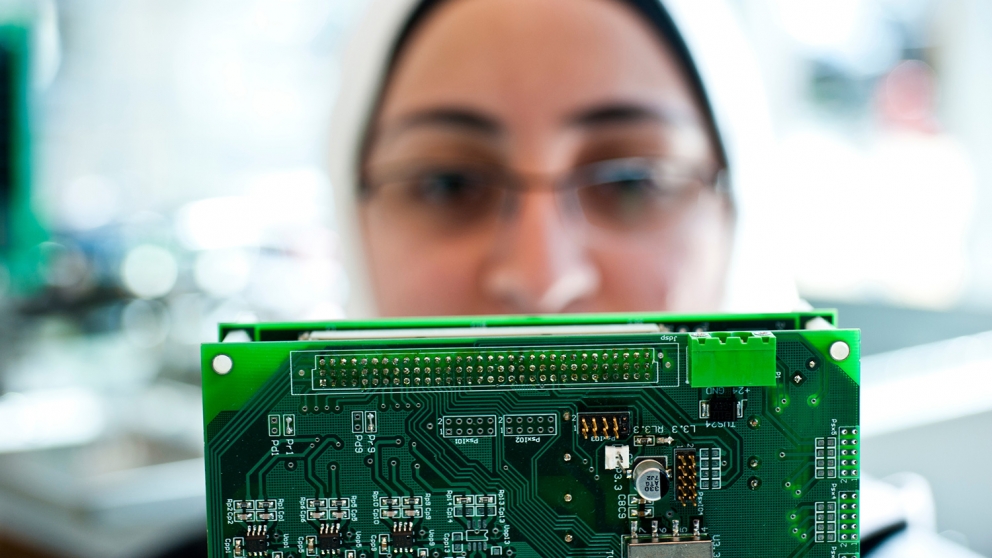Arizona State University
ASU has a robust power and energy systems curriculum led by the School of Electrical, Computer and Energy Engineering. Areas of research and education include power system analysis, power generation, transmission and distribution, high voltage engineering and power electronics. ASU is the lead university in the Power Systems Engineering Research Center (PSERC) and in the Quantum Energy and Sustainable Solar Technologies (QESST) Engineering Research Center whose mission is to advance photovoltaic science, technology and education to sustainably transform electricity generation.
Florida A&M University
Florida A&M University is one of the largest historically black universities in the United States by enrollment. The Power Science Laboratory, equipped with state-of-the-art research facilities, primarily focuses on developing high performance materials, structures, and devices for energy storage and energy conversion. Specific research includes high energy and high power lithium ion technologies for electric vehicle and grid applications including Li-ion capacitors, silicon nano-wire/carbon nanotube based Li-ion battery anodes, novel Li-air and Li-air flow batteries, and high efficiency and low cost fuel cells.
Florida State University
As a preeminent university in the State of Florida, FSU has a proud tradition in power systems education with 5 tenure track faculty and approximately 30 graduate students. The power systems area in the College of Engineering is integrated with the Center for Advanced Power Systems (CAPS). Students and faculty within CAPS work with full-time staff members in nearly 32,000 square feet of research laboratory including the largest real time digital simulation facility in an academic setting in the United States. CAPS research topics are critical to maritime and land based power and energy systems including smart grid, protection and control, rotating machines, high voltage, distribution and transmission, superconductivity and hardware-in-the-loop. Power capabilities extend to 5 Megawatts at 4,160 volts AC or 24,000 volts DC.
Missouri University of Science and Technology
Located in Rolla, MS&T faculty in power engineering and computer science provide key research on power system dynamics, power converters, and cyber-physical security for the power grid. The power engineering program at Missouri S&T is a mature program with high national recognition, strong industrial support, and multi-disciplinary ties. Graduate student enrollment in the power engineering program has been between 30 – 40 students annually over the past five years with a large participation in the on-line graduate certificate programs in Electric Power Systems Engineering and Electric Machines and Drives. MS&T is ranked in the top 10 nationally for “Best Online Graduate Engineering Programs.” Missouri S&T’s research facilities for power electronics, electric machines, and power system projects are extensive. Occupying just over 5000 square feet, the Emerson Electric Company Machines and Drives Laboratory is separated into two rooms for machine-oriented research and power electronics-oriented research projects.
NC State University
Faculty in the Power Electronics and Power Systems area at NC State conduct research in the fields of electrical power systems, power electronics systems, power management microsystems and power semiconductor devices. The majority of worldwide electric power is processed through some form of power electronics and much of this energy is wasted. Our research is making these systems more efficient and will save millions of kilowatt hours every year. In addition to the FREEDM Systems Center, NC State is also home to the PowerAmerica Institute, part of the National Network for Manufacturing Innovation, with a mission to accelerate the manufacture of wide bandgap power electronics. The Advanced Transportation Energy Center is developing technologies to enable widespread adoption of plug-in vehicles. The Advanced Diagnosis, Automation, and Control Laboratory applies the techniques of collaborative and distributed control to battery management, smart grid and building energy management. The Laboratory for Packaging Research in Electronic Energy Systems is using 3D printing technologies of ceramics, metals and polymers to provide rapid, flexible methods for physically creating unique power circuits.
